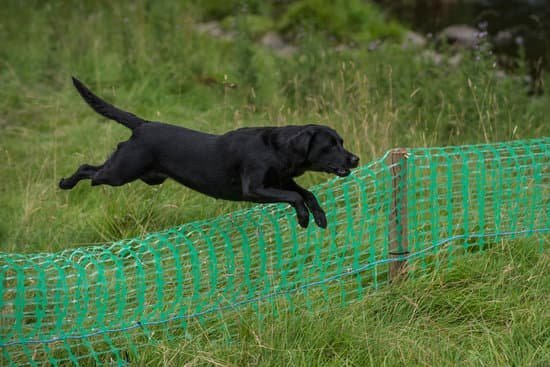Are you wondering how to crate train your dog in just 2 days? Crate training can be a useful tool for both you and your furry friend. In this article, we will explore the process of crate training, including the benefits for your dog and addressing any misconceptions about crate training. We’ll also provide tips and techniques for preparing for and executing successful crate training in a short period of time.
Crate training involves teaching your dog to feel comfortable in a confined space, typically a crate or kennel. It provides a safe and secure environment for your dog when you’re unable to supervise them, such as during travel or when left alone at home. Despite some misconceptions about crate training being cruel or unnatural, when done correctly, it can actually serve as a positive experience for your dog.
When preparing for crate training, it’s important to choose the right size and type of crate for your dog, as well as setting it up in an appropriate location within your home. Introducing your dog to the crate in a positive manner will also play a crucial role in their acceptance of this new space.
With these foundational aspects of crate training covered, you’ll be ready to move on to the practical steps involved in getting started with the actual training process.
Preparing for Crate Training
Before beginning the process of crate training your dog, it is essential to make sure you have everything set up and ready to go. Here are some key steps to take in preparation for crate training:
– **Choosing the right crate for your dog**: Consider your dog’s size, weight, and breed when selecting a crate. It should be large enough for them to stand, turn around, and lie down comfortably. There are various types of crates available, including wire crates, plastic crates, and soft-sided crates. Choose one that best suits your dog’s needs.
– **Setting up the crate in a suitable location**: The crate should be placed in an area of the house where your dog can still feel like part of the family. Avoid isolating the crate in a remote or unused area. Ideally, it should be in a quiet spot away from heavy foot traffic and household noise.
– **Introducing the dog to the crate in a positive way**: Once you have chosen and set up the crate, it’s time to introduce it to your dog. Put some treats or their favorite toy inside the crate to entice them to go in on their own. Keep the door open initially so they can explore at their own pace without feeling trapped.
By taking these preparatory steps, you can ensure that your dog will have a comfortable and positive association with their crate as they begin their training journey.
Day 1
On the first day of crate training your dog, it’s important to establish a routine that will help them acclimate to their new space. Begin by placing the crate in a location where the dog can still feel like a part of the family, such as in the living room or kitchen.
Introduce the crate in a positive manner, allowing your dog to explore and sniff around it at their own pace. Encourage them with treats and toys, creating a positive association with the crate.
Throughout Day 1, use positive reinforcement to motivate your dog to enter the crate. Start by placing treats near and eventually inside the crate, then gradually move on to using them as rewards for entering the space. When your dog goes into the crate on their own – even if only for a moment – be sure to praise them and offer a treat. This will help them understand that being inside the crate is a desirable behavior.
During this initial phase of training, you may encounter some resistance from your dog. They might not immediately take to being confined in an enclosed space or exhibit whining and restlessness when inside.
It’s important not to force them into or out of the crate, but rather encourage and reward any voluntary behavior that aligns with using it as their safe haven. This patience will go a long way in establishing trust between you and your pet throughout this process.
| Aspect | Details |
|---|---|
| Crate location | In living room or kitchen |
| Positive Reinforcement | Rewards for entering space |
| Addressing resistance | Encouraging voluntary behavior |
Day 1
Crate training a dog can be an effective way to provide them with a safe and secure space while also helping with house training and preventing destructive behaviors. On Day 1 of crate training, there are specific techniques that can be used to introduce the dog to the crate in a positive and nurturing manner.
To start Day 1 of crate training, it’s essential to establish a routine that includes regular periods of time spent in the crate. This routine should involve using treats and positive reinforcement to encourage the dog to enter the crate willingly. It’s important to make the experience as enjoyable as possible for the dog to create a positive association with the crate.
During this initial phase of crate training, it’s crucial to gradually increase the amount of time the dog spends in the crate. This process should be done slowly and carefully, ensuring that the dog does not exhibit signs of distress or anxiety while in the crate. Engaging the dog in activities such as providing chew toys or puzzle feeders can help keep them entertained while they are inside the crate.
By consistently implementing these techniques on Day 1 of crate training, you can set a strong foundation for your dog’s understanding and acceptance of their new living space within a relatively short period of time.
- Introduce your dog to his new “den” by gradually increasing time spent inside
- Use treats and toys strategically so that your dog enjoys being inside
- Pay attention to your pet’s body language for any signs of distress or discomfort
Day 2
On Day 2 of crate training, it is important to continue the routine established on Day 1. This consistency will help your dog understand that the crate is a regular part of their daily life. It’s crucial to reinforce the positive association with the crate and ensure that your dog feels safe and comfortable while inside. Provide your dog with mental and physical stimulation while in the crate to prevent boredom and anxiety.
Introducing the concept of the crate as a safe and comfortable space for your dog is vital on Day 2. Place soft bedding or a favorite toy inside the crate to make it more inviting for your furry friend. You can also consider feeding your dog meals inside the crate to create positive associations.
It’s essential to remember that reinforcing crate training takes time and patience, especially if your dog has had negative experiences with crates in the past. Provide ongoing support and training as needed to reinforce positive habits. By reinforcing a positive association with the crate, you can use it as a tool for house training and preventing destructive behavior in the long term.
| Activity | Duration |
|---|---|
| Playtime with toys in the crate | 20-30 minutes |
| Feeding meals inside the crate | 2 times per day |
| Ongoing support and reinforcement | As needed |
Troubleshooting Common Issues
Dealing With Whining, Barking, or Other Vocalizations
Some dogs may initially display signs of distress, such as whining or barking, when first introduced to the crate. This behavior is normal and it’s important for owners to remain calm and patient during this process. One effective way to address this issue is by ignoring the dog when they display vocalizations while in the crate.
By not reacting to their behavior, the dog will eventually learn that whining or barking will not result in attention or being let out of the crate. It’s also essential to ensure that the dog has been exercised and given a chance to relieve themselves before being crated, as this can help reduce vocalizations.
Addressing Any Accidents or Anxiety-Related Behaviors
Accidents or anxiety-related behaviors may occur during the crate training process, especially for dogs who are not used to being confined. If a dog has an accident in the crate, it’s important to clean it up thoroughly using an enzymatic cleaner to remove any lingering odors.
Additionally, provide the dog with more frequent potty breaks and ensure they have ample opportunities to empty their bladder before crating them. For anxiety-related behaviors such as panting, pacing, or excessive drooling, consider using calming aids such as pheromone diffusers or soothing music to help relax the dog while in the crate.
Gradually Increasing the Time Spent in the Crate
As your dog becomes more comfortable with being crated, gradually increase the amount of time they spend inside. Start by leaving them in the crate for short periods while you are at home and gradually extend this time as they become more relaxed.
It’s crucial to monitor your dog’s behavior during this process and make sure they are not showing signs of distress. The goal is for your dog to view their crate as a safe and comfortable space, so taking this gradual approach will help prevent any negative associations with being crated for extended periods.
Gradual Independence
Allowing Alone Time
Once your dog has become accustomed to spending time in the crate while you are at home, it’s important to start gradually increasing the amount of time they spend in the crate alone. Start with short absences, such as leaving the room for a few minutes, and gradually work up to longer periods of time. This will help prevent separation anxiety and help your dog feel comfortable and secure in the crate even when you are not around.
Ensuring Comfort and Security
As you begin to leave your dog alone in the crate, it’s essential to ensure that they have everything they need for comfort and security. Make sure the crate is placed in a quiet area of the house where your dog can relax without being disturbed. Provide them with some familiar items such as a favorite toy or blanket to help them feel more at ease during their time alone.
Using Crate for Training
Using the crate for alone time can also be beneficial for house training and preventing destructive behavior. When your dog is still learning good behavior habits, having them spend time in the crate can prevent accidents from happening around the house. It also keeps them from engaging in destructive behaviors when left unsupervised, helping them learn proper behavior while maintaining their safety.
Long-Term Maintenance and Support
In conclusion, crate training your dog in just 2 days is a feasible and effective way to teach your furry friend to feel comfortable and secure in their crate. By following the outlined steps for preparing, introducing, and reinforcing the training, you can create a positive association between your dog and their crate. However, it’s important to remember that long-term maintenance and support are crucial for the success of crate training.
After successfully completing the initial 2-day training process, it’s essential to maintain a positive association with the crate. This means continuing to use treats and positive reinforcement when your dog enters the crate voluntarily, as well as avoiding using the crate as a form of punishment. Additionally, providing mental and physical stimulation while your dog is in the crate can help reinforce their positive feelings towards it.
The crate can also serve as a retreat for your dog in times of stress or overstimulation. By ensuring that the crate remains a safe and comfortable space for your pet, you can help them feel secure during challenging situations.
Furthermore, ongoing support and training may be necessary to address any issues that arise or to reinforce good habits. With patience and consistency, crate training can be a valuable tool for house training and preventing destructive behavior in your beloved canine companion.
Frequently Asked Questions
How Quickly Can You Crate Train a Dog?
The time it takes to crate train a dog can vary depending on the dog’s age, temperament, and past experiences with crates. Some dogs may take to crate training quickly within a few days, while others may need several weeks to become comfortable with being crated.
How Do You Crate Train a Dog in 24 Hours?
Crate training a dog in 24 hours is not recommended as it can be stressful for the dog and counterproductive to the training process. It’s important to introduce the crate gradually and in a positive manner, allowing the dog to acclimate to this new environment at their own pace.
Rushing the process can lead to anxiety and resistance towards the crate.
Is It OK to Let Puppy Cry in Crate at Night?
It is normal for a puppy to cry or whine when first introduced to being crated, especially at night. However, it’s important for pet owners to distinguish between distress cries and attention-seeking behavior.
While it can be hard not to respond immediately when a puppy cries in the crate at night, giving in may reinforce the behavior. It’s best to let them self-soothe and gradually adjust to being crated at night.

Welcome to the blog! I am a professional dog trainer and have been working with dogs for many years. In this blog, I will be discussing various topics related to dog training, including tips, tricks, and advice. I hope you find this information helpful and informative. Thanks for reading!





